


Flying Pegasus Airlines:
A Three-Day Long Weekend Escape to Nice
“Light is everything.” Perhaps this is the one sentence that describes Nice in
its purest yet most meaningful way. The city’s soft pastel hues, its gentle
warmth that wraps around you, the bright sky that glows in every season, and
its deep blue sea… These are just what you see. But Nice is far more than what
meets the eye. It has a depth that touches the soul.
Simplicity, ease, and a peaceful serenity… The same tender energy that
inspired Matisse’s paintings and encouraged him to experiment with new styles
is still alive at the very heart of Nice.
Once discovered by Queen Victoria and the aristocrats of her era, Nice has
mastered the art of blending luxury and richness with an effortless sense of
simplicity. At every step, you can feel this harmony. With its understated
elegance, art seems to be seamlessly woven into the city’s streets and
buildings as if it has always belonged there.
From picnics by the sea to family-run cafés passed down through generations,
from charming restaurants to the flower and antique markets of Cours Saleya,
Nice embraces you like an old friend as you sip your drink on a small balcony
overlooking the sunset. You never feel like a stranger. It’s as if you’ve
always belonged here. And it does this so gracefully that even your soul
doesn’t notice the moment it happens.
I flew to Nice with Pegasus Airlines and was hosted by the Nice Tourism
Office. My dear guide Caterina accompanied me throughout my three-day journey,
helping me not just to see the city, but to feel it. Her words stayed with me
deeply:
“You can experience Nice with all five senses. You hear the sounds of the
people and the sea; you breathe in the scent of coffee, flowers, and the
city’s unique aroma. You see art gently hidden on every corner, nature, and
the light. You taste Niçoise cuisine and coffee… and you feel it all with your
heart.”
Pegasus Airlines operates flights from Istanbul Sabiha Gökçen Airport to Nice
every Monday, Wednesday, Friday, and Sunday — a perfect opportunity for a
weekend escape or a longer holiday. You can enrich your Côte d’Azur journey
with delightful day trips to Eze Village, Villefranche, Menton, Monaco,
Antibes, and Saint-Paul-de-Vence.

Nice
For those looking to make the most of a long weekend, Pegasus Airlines offers
a seamless escape from Istanbul Sabiha Gökçen Airport to Nice, operating
flights every Monday, Wednesday, Friday, and Sunday. With a flight time of
just around three hours, you can leave the city behind and arrive in the heart
of the French Riviera ready to explore.
Pegasus Airlines has a modern fleet with an average age of 4.5 years, which
means passengers enjoy cleaner, more comfortable cabins and the reassurance of
flying on well-maintained, efficient aircraft. Beyond comfort, sustainability
is at the heart of Pegasus’ operations. The airline has been recognized across
Europe for its environmental and social initiatives, earning three prestigious
awards at the Airline Economics Aviation 100 European & Sustainability
Awards 2025.
• Sustainability Team of the Year: For implementing a holistic ESG strategy,
including carbon-neutral goals, gender balance initiatives, and transparent
reporting practices.
• European Treasury Team of the Year: Recognized for innovative financial
transactions, including aircraft financing, Eurobond issuances, and
sector-first engine maintenance financing.
• Excellence in Sustainable Aviation Finance: Awarded for the sustainable
JOLCO financing of three Airbus A321neo aircraft, linking debt and equity
components directly to long-term sustainability goals.
These awards underscore Pegasus Airlines’ dual commitment to sustainable
aviation and financial innovation, making it a forward-thinking choice for
travelers who value responsibility alongside convenience.
Onboard Experience
From check-in to touchdown in Nice, Pegasus Airlines delivers a
professional and enjoyable travel experience:
• Comfortable Seating & Modern Cabins: Young aircraft with well-maintained
interiors and seating.
• Sustainability in Action: Environmentally conscious practices throughout the
journey.
• Efficient Flight Time: Arrive in Nice in just over three hours, maximizing
your time on the ground.
Expanding Destinations
Pegasus Airlines continues to expand its route network. With 156 scheduled
destinations across 54 countries, including new services from Izmir to
Barcelona and increased flights to Hatay and Ercan, the airline offers both
domestic and international travelers unprecedented flexibility.

Bathed in golden light and kissed by the Mediterranean breeze, Nice stands as
the radiant capital of the French Riviera, a city that embodies the very
essence of southern charm.
A blessed region where the sun shines more than 300 days a year, framed by the
mountains and the azure of the Mediterranean, Nice offers a gentle way of life
that feels less like a legend and more like a promise kept. Its sublime bay,
soft light, and tranquil rhythm have long defined the art of living along the
Côte d’Azur.
Even before your plane touches down, the view through the window takes your
breath away: the endless turquoise stretch of the Mediterranean meeting
snow-capped Alpine peaks in the distance. It’s no surprise that the approach
to Nice Côte d’Azur International Airport has been ranked among the world’s
most beautiful for years.
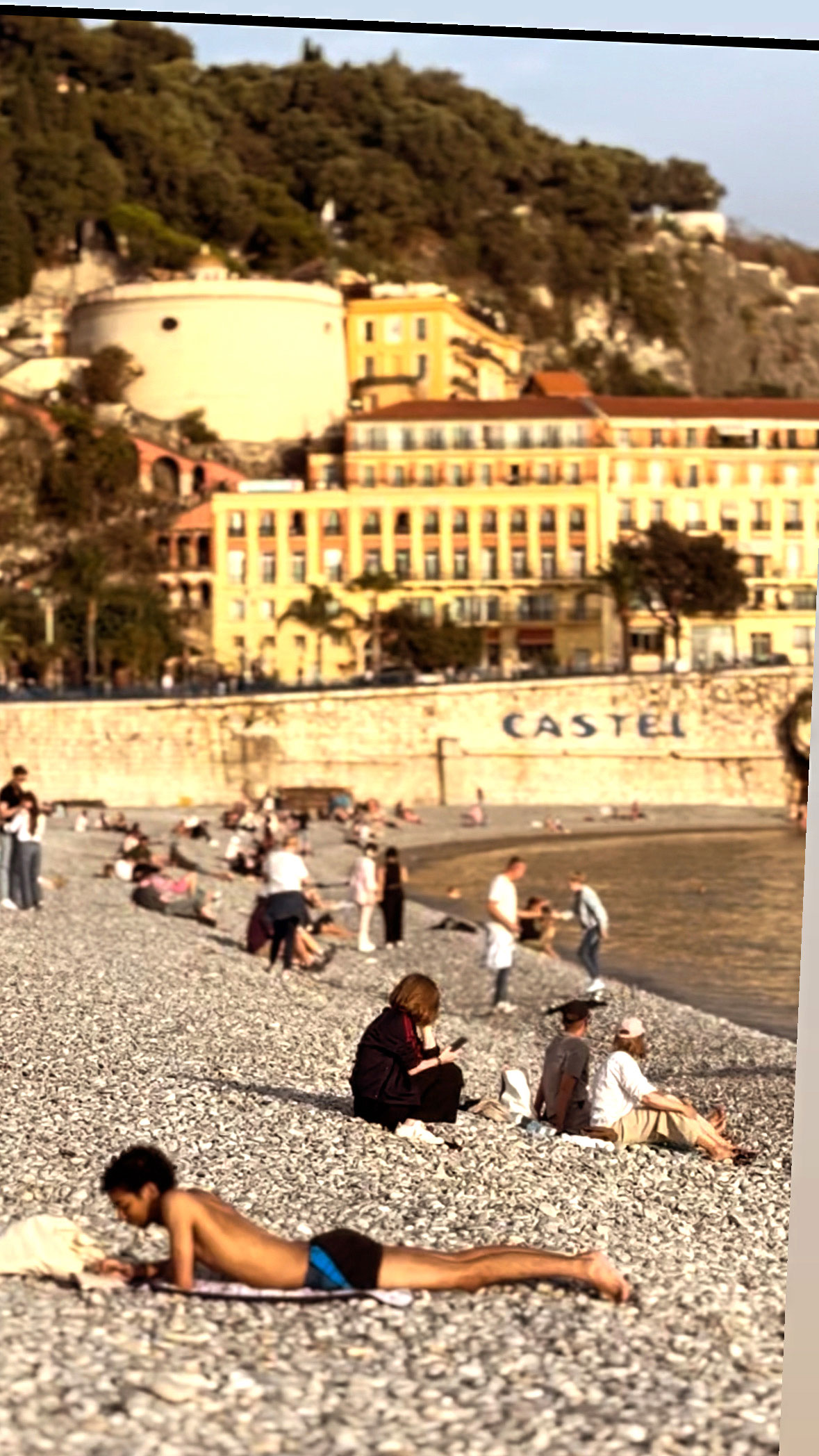
Once here, you understand why artists, poets, and travelers have been
captivated for centuries. Nice is not merely a destination, it is a way of
life. From breakfast on a sun-drenched terrace to an evening stroll along the
Promenade des Anglais, from the laughter echoing through the narrow alleys of
the Old Town to a candlelit dinner overlooking the Baie des Anges, the city
captures the Mediterranean art de vivre like nowhere else.
The old quarter, with its ochre and saffron façades, artisan workshops, and
lively squares, forms the beating heart of Nice. By day, the Cours Saleya
market bursts with colors and scents , a sensory celebration ranked among
France’s most exceptional markets. And from the Colline du Château,
the view stretches endlessly over the bay, the harbor, and the city’s
terracotta rooftops , a panorama that glows differently with every hour of the
day.
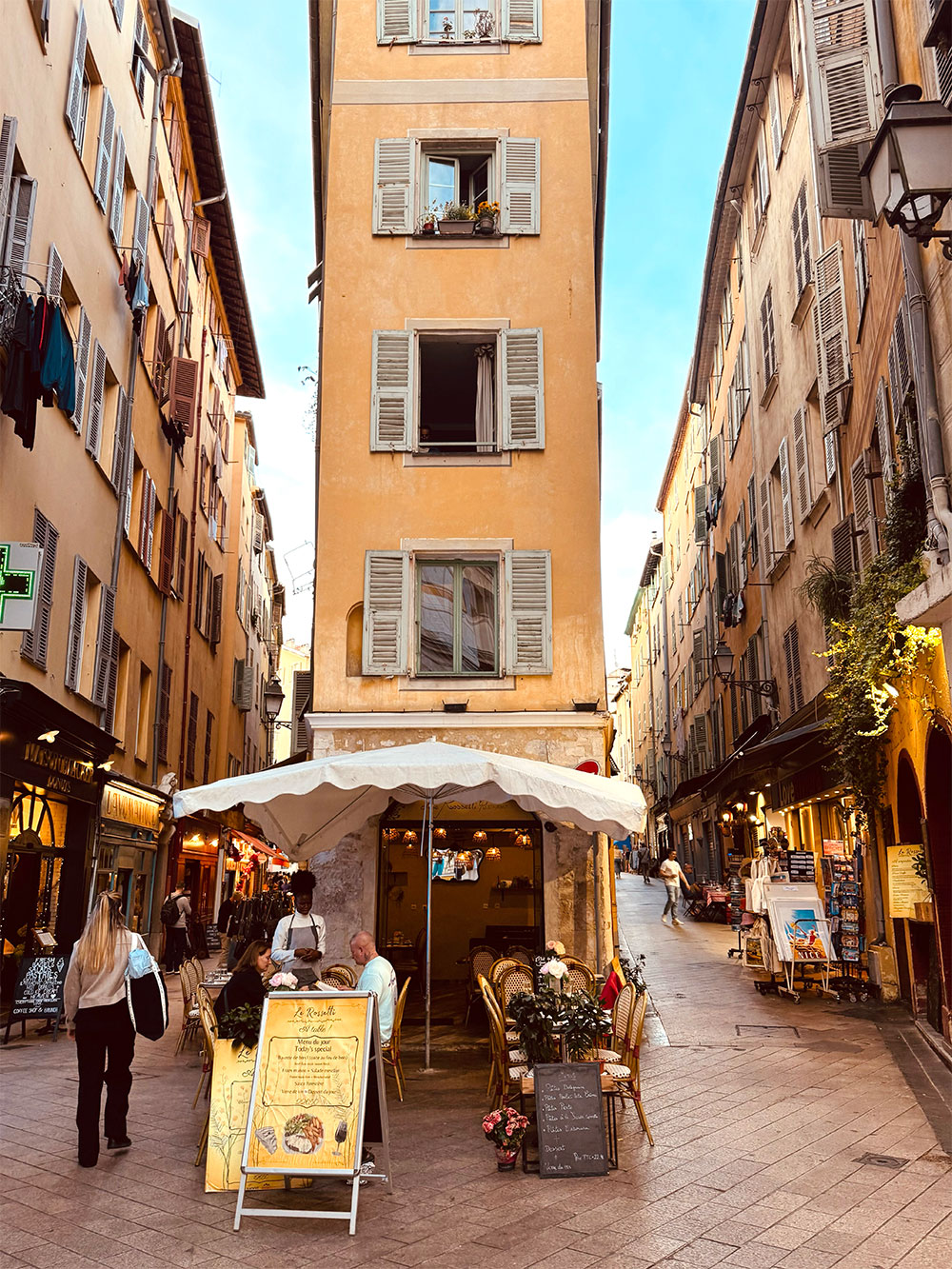
the Riviera
Long before it became a magnet for the elite of Europe, Nice was a modest
fishing village clinging to the curve of the Mediterranean. Its destiny
changed in the mid-18th century, when the first waves of British visitors
began arriving in search of sunshine, tranquility, and the healing power of
the sea air. Among them was the Scottish writer Tobias Smollett, whose vivid
travel accounts introduced the world to the luminous beauty of Nice and in
doing so, helped give birth to winter tourism on the Riviera.
From that moment, Nice would never be the same. The British gentry transformed
this quiet coastal town into a fashionable winter resort, building elegant
villas in what soon became known as “Little London.” In 1822, when harsh
weather brought famine to the region, an Anglican clergyman named Lewis Way
organized a public works project to employ the locals The result was a seaside
walkway known as lou camin dei Inglés, or the English Path. Today, the
Promenade des Anglais remains one of the city’s most iconic symbols, a
timeless ribbon of light along the Mediterranean.
As the 19th century unfolded, aristocrats, artists, and crowned heads
followed. Sea bathing became the new luxury, and the hills above the city were
soon dotted with villas and palaces. Even Queen Victoria herself spent several
winters here, residing at the splendid Excelsior Regina Palace in Cimiez -
later home to Henri Matisse. The noon cannon that still echoes from Castle
Hill each day is said to recall another British gentleman’s whimsy: Sir Thomas
Coventry’s way of reminding his talkative wife that lunch was ready.
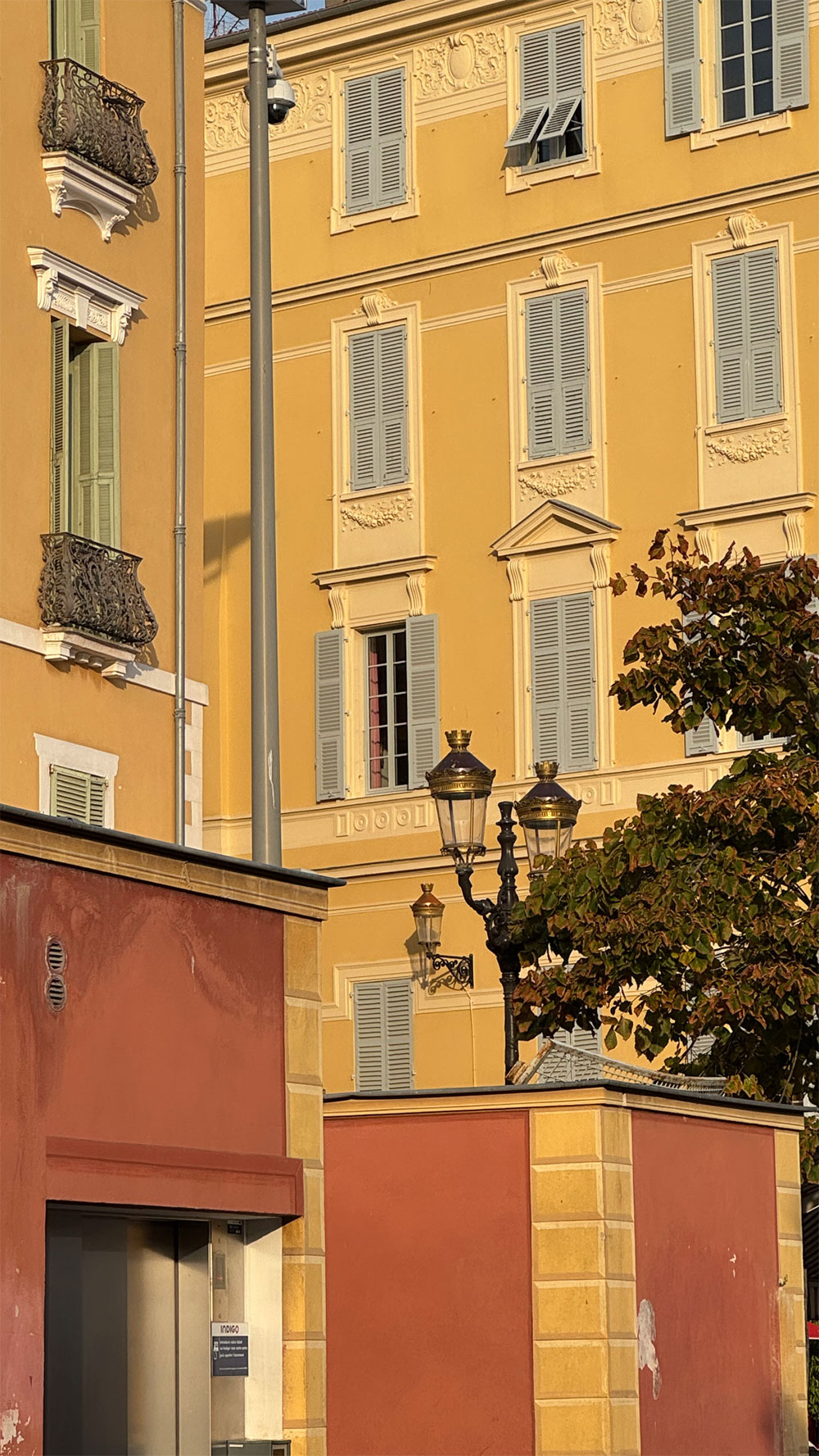
Yet the British were only the first chapter of Nice’s cosmopolitan story. Soon
after, the Russian nobility arrived, drawn by the same gentle climate and
luminous sky. They built their own landmarks, including the magnificent
Russian Orthodox Cathedral of Saint Nicholas, completed in 1912 on the very
spot where Tsarevich Nicholas Alexandrovich, son of Alexander II, had died
decades earlier. The Russian presence transformed parts of the city into a
glittering enclave of exiled aristocracy, their palaces and gardens still
whispering tales of imperial grandeur.
The Italian influence, too, is written in every stone and façade. Once under
the rule of the House of Savoy, Nice absorbed the colors and artistry of
Turin, Genoa, and Piedmont. The warm hues of ochre, coral, and sienna that
paint its buildings are an enduring legacy of this transalpine past. Even
Garibaldi, the great hero of Italian unification was
born here, forever torn between his Italian heritage and the city’s French
destiny.
And through the centuries, exiles and dreamers have continued to find refuge
here including Nilüfer Hanımsultan, granddaughter of Sultan Murad V, who
settled in Nice with her mother in 1924 after the Ottoman exile.
Once a humble coastal town, Nice reinvented itself as the Riviera’s radiant
stage — where every winter sunset seems to echo the footsteps of queens,
writers, and wanderers who once came in search of light, and never quite left.

Since 2021, Nice has held a distinguished place on the UNESCO World Heritage
List, recognized as the “Winter Resort Town of the Riviera.” This honor
celebrates the city’s exceptional universal value — its harmonious blend of
architecture, landscape, and urban planning shaped by centuries of
international cultural influence.
A true open-air museum, Nice invites visitors to admire an extraordinary
architectural heritage from the elegance of the Belle Époque to the
bold lines of Art Deco, from Baroque façades to modern creations. Simply look
up, and you’ll find a skyline alive with beauty, diversity, and refinement.
For generations, artists have been captivated by Nice’s luminous light, that
ethereal glow that seems to dance between sea and sky. Painters, sculptors,
and writers have all drawn inspiration here — from Matisse and Chagall to Le
Clézio, Apollinaire, Aragon, and Nietzsche. Their works, many of which can be
discovered in the city’s museums and galleries, reflect the creative spirit
that continues to define Nice Côte d’Azur.
To delve deeper into this rich cultural story, the Nice World Heritage Centre,
chaired by former Minister of Culture Jean-Jacques Aillagon, offers an
immersive experience that traces the city’s journey toward UNESCO recognition.
Within its Interpretation Centre — home to a permanent, freely accessible
exhibition — visitors can explore a spectacular 3D model and discover how Nice
evolved into the Riviera’s most cosmopolitan winter resort.

Rising gracefully between sea and mountains, Castle Hill Park (Parc de la
Colline du Château) is without doubt one of Nice’s most captivating vantage
points. The ascent may ask for a little effort, but the reward is nothing
short of spectacular. As you climb, the city unveils itself in a series of
unforgettable tableaux: the shimmering Baie des Anges, the terracotta rooftops
of Old Nice, and the vibrant hues of Port Lympia, each scene more mesmerizing
than the last.
The Castle Hill Botanical Park offers a viewpoint over the Bay of Angels, Old
Nice and the Port. It has become popular for its cool shaded areas and
surprising waterfall. It's a
a green oasis where locals walk their dogs, unroll yoga mats beneath the
whispering pines, or simply lose themselves in a book as the Mediterranean
light softens around them.
For those who prefer a gentler route, an elevator from Rue des Ponchettes
provides easy access to this panoramic escape.
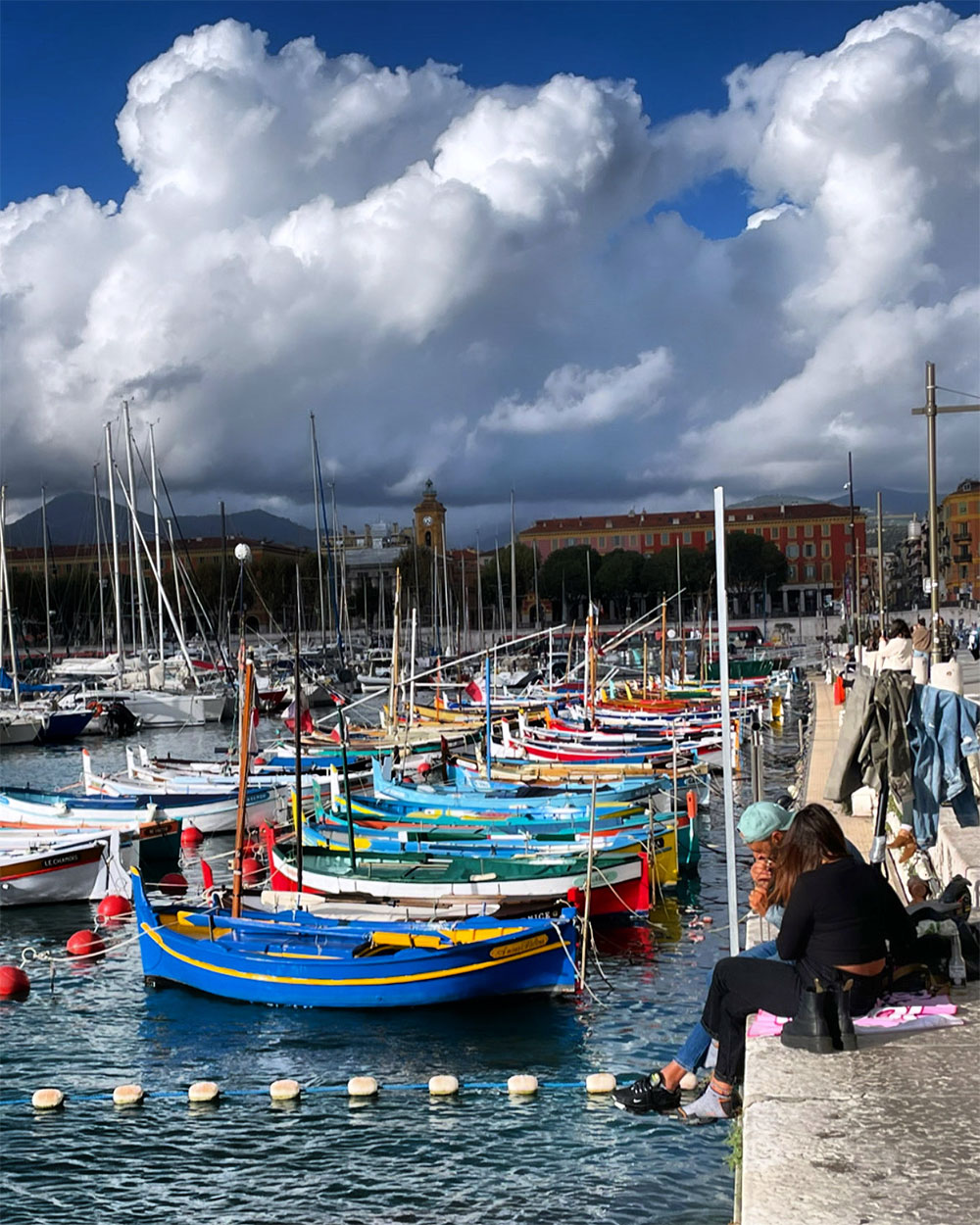
Lined up gracefully in the calm waters of Port Lympia, the small, vividly
painted fishing boats known as “pointus” have become one of Nice’s most
charming emblems. “Pointus” ,timeless icons of Nice’s fishing
heritage, painted in the colours of the Mediterranean.Their distinctive design
with both bow and stern tapering into a perfect point speaks of
centuries-old maritime craftsmanship that still thrives along the Riviera.
Lovingly restored and maintained by passionate locals, these wooden boats are
not merely remnants of the past; they are living pieces of heritage that
continue to animate the port with colour and character. Painted in joyful
shades of azure, ochre, coral and lemon, each pointu reflects a personality, a
story, a memory together forming a painter’s palette that comes
alive beneath the Mediterranean sun.
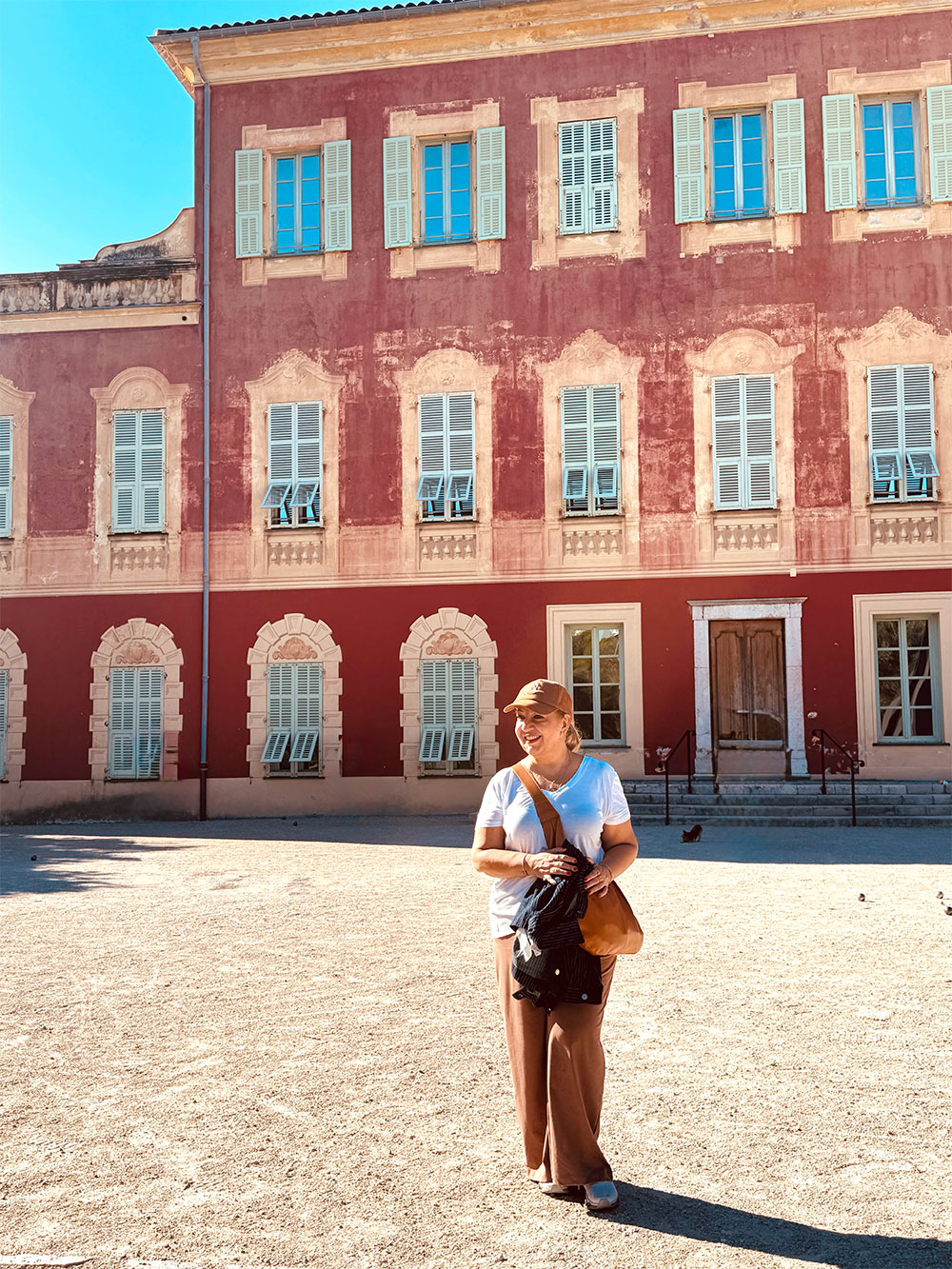
Tucked between the legendary Cours Saleya and the Promenade des Anglais, the
elegant Cours Jacques Chirac is Nice’s latest architectural delight — a
radiant promenade where history meets modern allure. Inaugurated only last
February, the site pays tribute to France’s former President with a statue
that now graces its sunlit centre.
Framed by graceful arcades, the walkway is a haven for photographers.
Throughout the day, the light dances across the columns, casting geometric
shadows that shift with the rhythm of the sun. Stand beneath the arches and
gaze out toward the palm-lined Promenade and the endless blue of the
Mediterranean. It’s a scene that feels effortlessly cinematic.
Visit in the late afternoon, when the sun filters through the arcades and the
light turns the stone a soft golden hue, the perfect hour for a photograph.

If the Promenade des Anglais embodies the glamorous spirit of Nice, Place
Masséna captures its artistic soul. Framed by graceful arcades and shimmering
façades painted in deep Venetian red, this square feels like stepping into a
living canvas one where light and geometry play in perfect harmony.
From the very first step, your eyes are drawn to its iconic black-and-white
chequered pavement, bold and timeless, as if inviting you to join a giant game
of draughts. To the north, elegant arcaded buildings stand in quiet symmetry;
to the east, the soft outline of Tuscan hills unfolds in the distance.
But Place Masséna has more to offer than postcard beauty. It’s a place where
art, people, and architecture convers literally. The seven ethereal figures
imagined by Spanish artist Jaume Plensa, collectively titled Conversation in
Nice, rise above the square like luminous messengers. At night, they glow in
shifting hues - blue, pink, amber- engaged in a silent dialogue that bridges
continents and cultures.
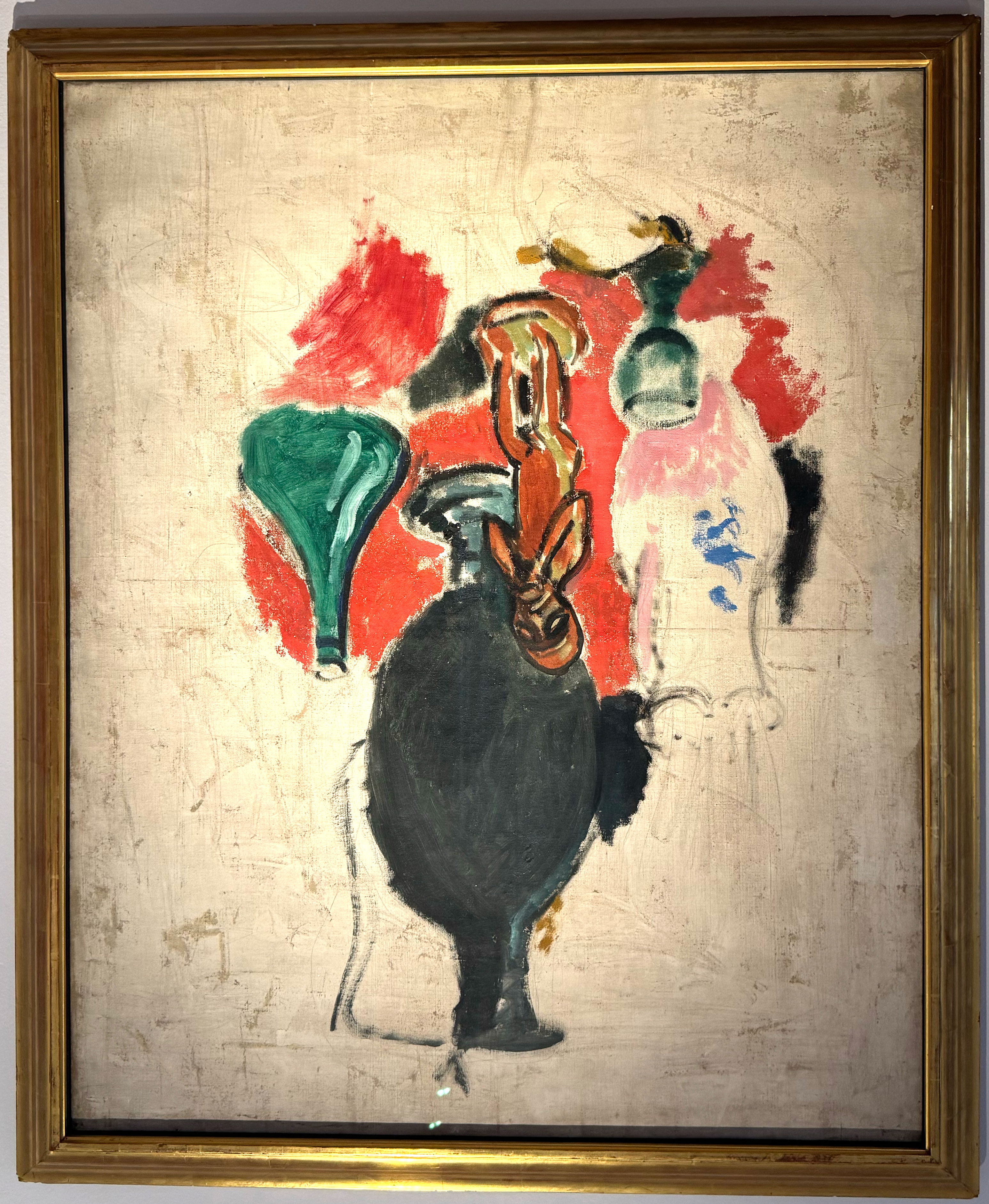
Henri Matisse once said, “Most come here for the light and the picturesque
beauty. I am from the North. The large colourful reflections in January, the
brightness of the day are what attracted me to settle here.”
Those words, written in 1952, still echo through the streets of Nice—a city
that shaped Matisse as much as he shaped its cultural identity.
It was December 1917 when Matisse first arrived in Nice. What began as a
temporary escape from the grey skies of Paris soon became a lifelong love
affair. The gentle Mediterranean light, the pastel façades, and the serene
rhythm of the Côte d’Azur infused his work with warmth and radiance. Here, he
painted, sculpted, and eventually created his famous paper cut-outs—vivid
compositions that captured the essence of pure color and form.
Until his death in 1954, Nice remained Matisse’s sanctuary and his muse. Every
corner of the city, from the old town’s ochre walls to the tranquil sea views,
seemed to mirror his artistic evolution.
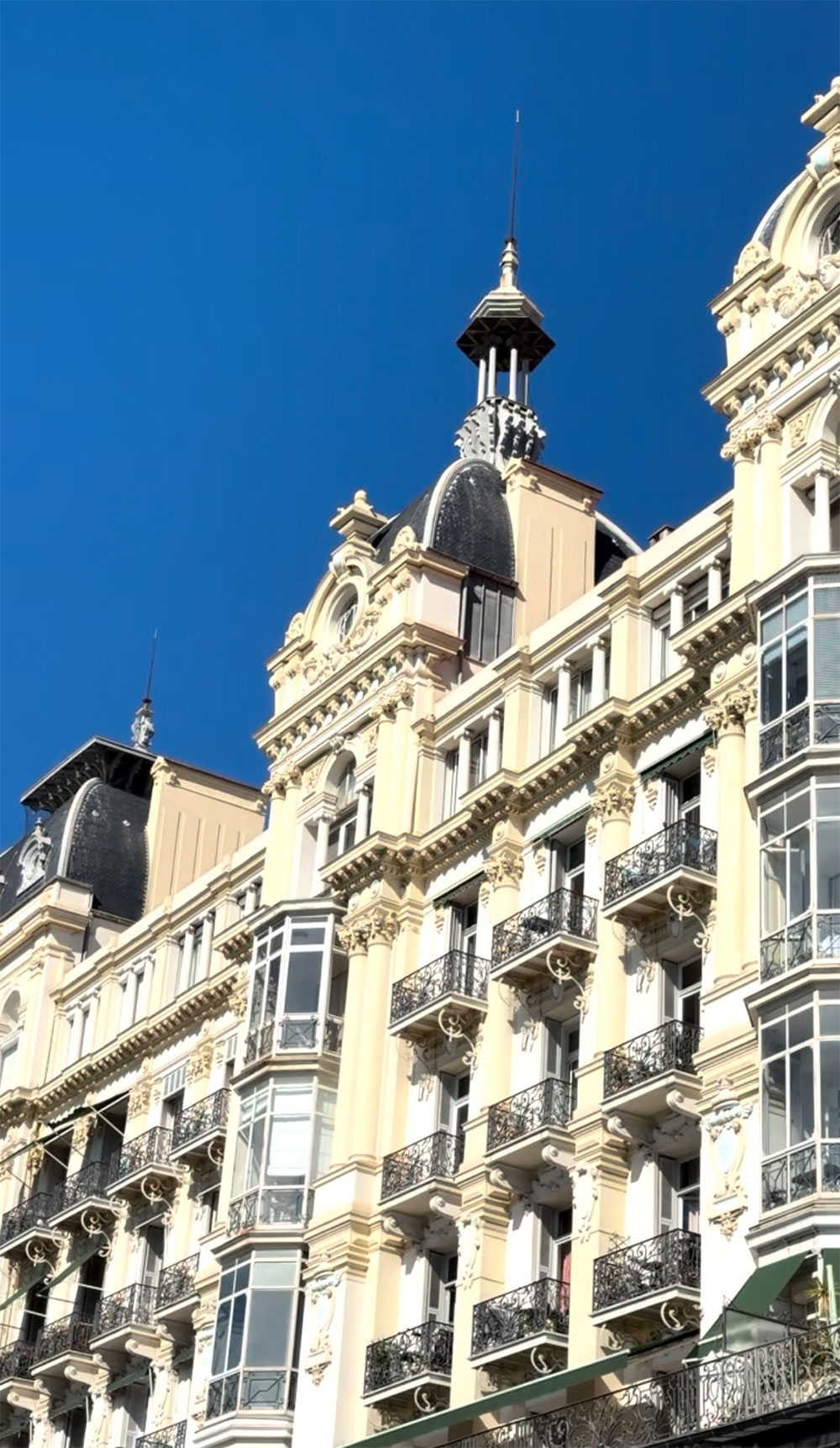
Musée Matisse — A Sanctuary of Color and Spirit
Set within a fully renovated 17th-century Genoese villa nestled among olive
trees in the peaceful Cimiez Gardens, the Musée Matisse offers one of the
world’s most comprehensive looks at the artist’s evolution. This single-artist
museum traces Matisse’s creative journey from the 1890s to the late cut-out
gouache papers that marked his final artistic chapter.
Home to nearly 600 works, the museum’s collection stems from the generous
donations of Matisse and his heirs to the City of Nice. Paintings, sculptures,
drawings, and engravings unfold in intimate progression, revealing the
artist’s continuous search for harmony and balance. Beyond the masterpieces,
the museum also preserves Matisse’s personal belongings -sketchbooks,
furniture, and cherished objects—that bring visitors closer to the inner world
of his creation.
Temporary exhibitions regularly offer new perspectives on the master, shedding
light on lesser-known facets of his work or placing him in dialogue with
contemporaries and those he continues to inspire. The 2026 exhibition will
explore “Matisse and Fashion.

To discover Nice, begin not with its museums or monuments, but with its
markets, the beating heart of Mediterranean life. Here, mornings
unfold in a harmony of sounds and aromas: the hum of conversation, the scent
of basil and citrus, the rustle of fresh leaves wrapped in paper. Every stall
is a story of local growers, coastal fishermen, and artisans whose
craft preserves the city’s authentic charm.

Tucked between the ochre façades of Old Nice, Cours Saleya is not just a
market, it is a ritual. Classified among France’s exceptional
markets, it comes alive from Tuesday to Sunday, from early dawn until early
afternoon, with an energy that feels timeless.
Beneath its striped awnings, vivid blooms spill over wooden tables, mingling
with the scent of ripe peaches, lavender, and the sea breeze. Fresh vegetables
from the hills of Nice, glistening fish, and hand-made delicacies form a
vibrant mosaic that captures the city’s generous spirit.
The antiques and second-hand dealers make a date with lovers of vintage
objects and good deals every Monday in Nice, on the Cours Saleya's antiques
market. The square fills with antique dealers and collectors offering Belle
Époque jewelry, silver cutlery, old postcards, and curiosities from another
time
A Morning at Liberation Market
There’s a different kind of beauty in the Liberation District — one that isn’t
framed by the sea, nor captured in the postcards of the Promenade des Anglais.
It’s the beauty of everyday life.
Just a short tram ride from the Old Town, the Marché de la Libération awakens
with the first light of day. Stalls open one by one, revealing piles of
glistening fish, baskets of sun-warmed tomatoes, and flowers still heavy with
morning dew.
Here, the air is thick with aromas — rosemary, citrus, salt, and freshly baked
bread. Local farmers from the nearby hills greet familiar faces, their voices
blending into the gentle hum of conversation and the clatter of coffee cups
from nearby cafés.
This is not a market designed for tourists, but a ritual of daily life — a
meeting place where Niçois residents come to choose the ripest fruit, share a
recipe, or simply linger beneath the striped awnings as the city slowly comes
alive.
You’ll find everything here: glistening sea bass and prawns, baskets of figs
and lemons, fragrant honey from the Var countryside, creamy goat cheese, and
delicate blooms in soft pastel shades. It’s a sensory portrait of Nice —
fresh, colorful, and alive.

Just beyond the sun-drenched streets of Nice, a string of coastal gems and
hilltop villages unfolds like a living postcard — each with its own rhythm,
its own light, its own story. Along this dazzling stretch of the Côte d’Azur,
beauty takes many forms: the shimmer of the sea, the quiet dignity of stone
walls, the aroma of lemon trees, and the echo of centuries-old craftsmanship.
Set out towards Villefranche-sur-Mer,
Saint-Jean-Cap-Ferrat, Èze and Menton names that evoke
the spirit of Mediterranean holidays and artistic inspiration. From the
fishing ports with pastel façades to perched villages overlooking the
turquoise coastline, every stop invites you to slow down and simply take it
all in. On one side, the horizon stretches endlessly across the sea; on the
other, the Alps rise in the distance, their snow-capped peaks gleaming under
the Riviera sun.
Along the coast, the Mediterranean continues to call with its
secret coves, golden beaches, and deep-blue waters inviting sailors, divers,
and dreamers alike.
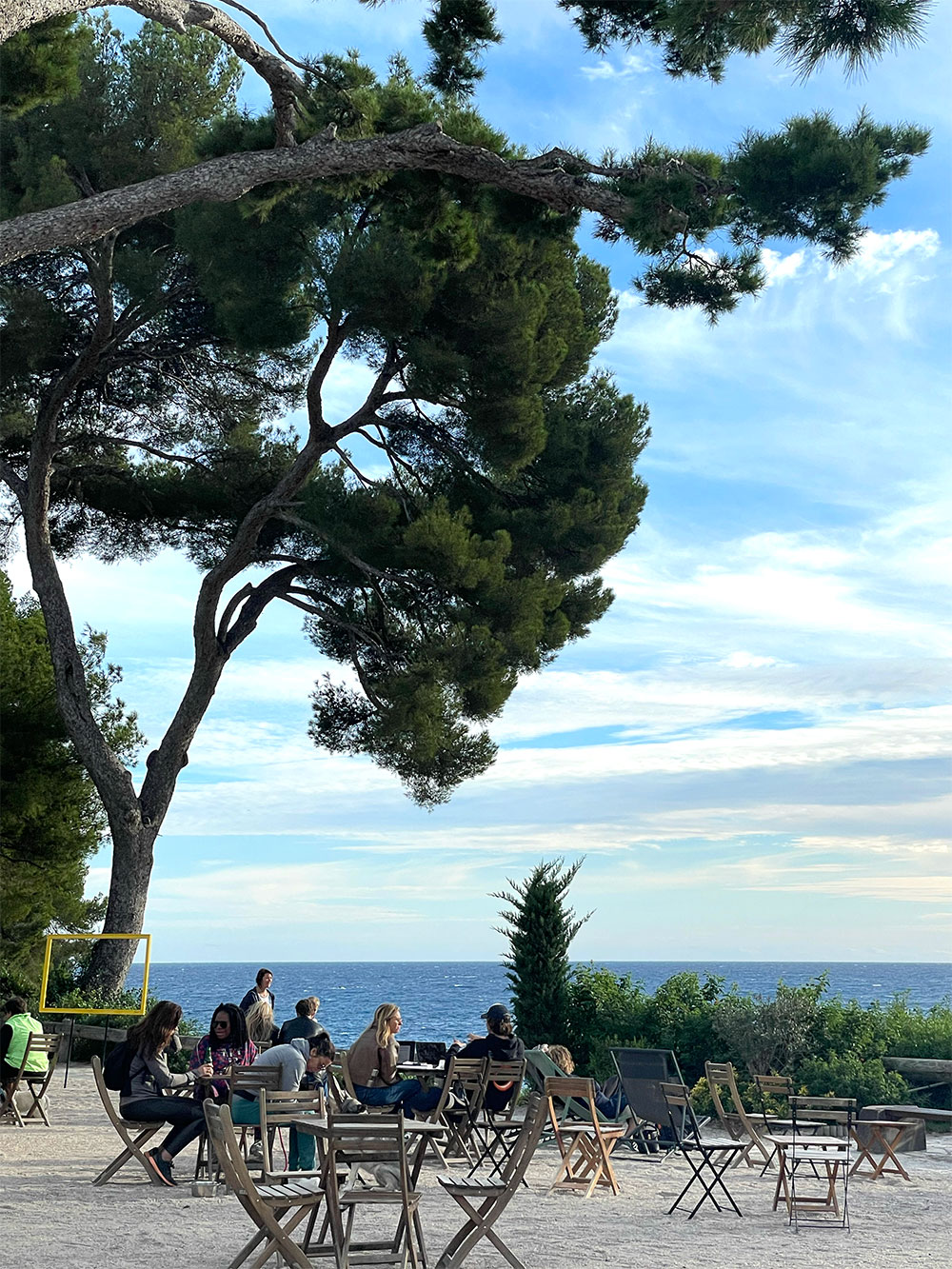
Nestled between Nice and Cap-Ferrat, Villefranche-sur-Mer unfolds like a
painting — a cascade of ochre, coral, and sun-washed facades tumbling gently
toward the sea. One of the Riviera’s most enchanting harbours, this maritime
town combines centuries of history with the timeless allure of the
Mediterranean.
Once a modest fishing village, today Villefranche-sur-Mer welcomes elegant
yachts alongside traditional pointus — the brightly painted wooden boats that
still sway gently in the bay. The sweeping curve of its shoreline, framed by
pastel buildings and the deep sapphire of the water, creates one of the most
iconic views on the Côte d’Azur. No wonder artists and filmmakers have long
been captivated by its light and atmosphere.
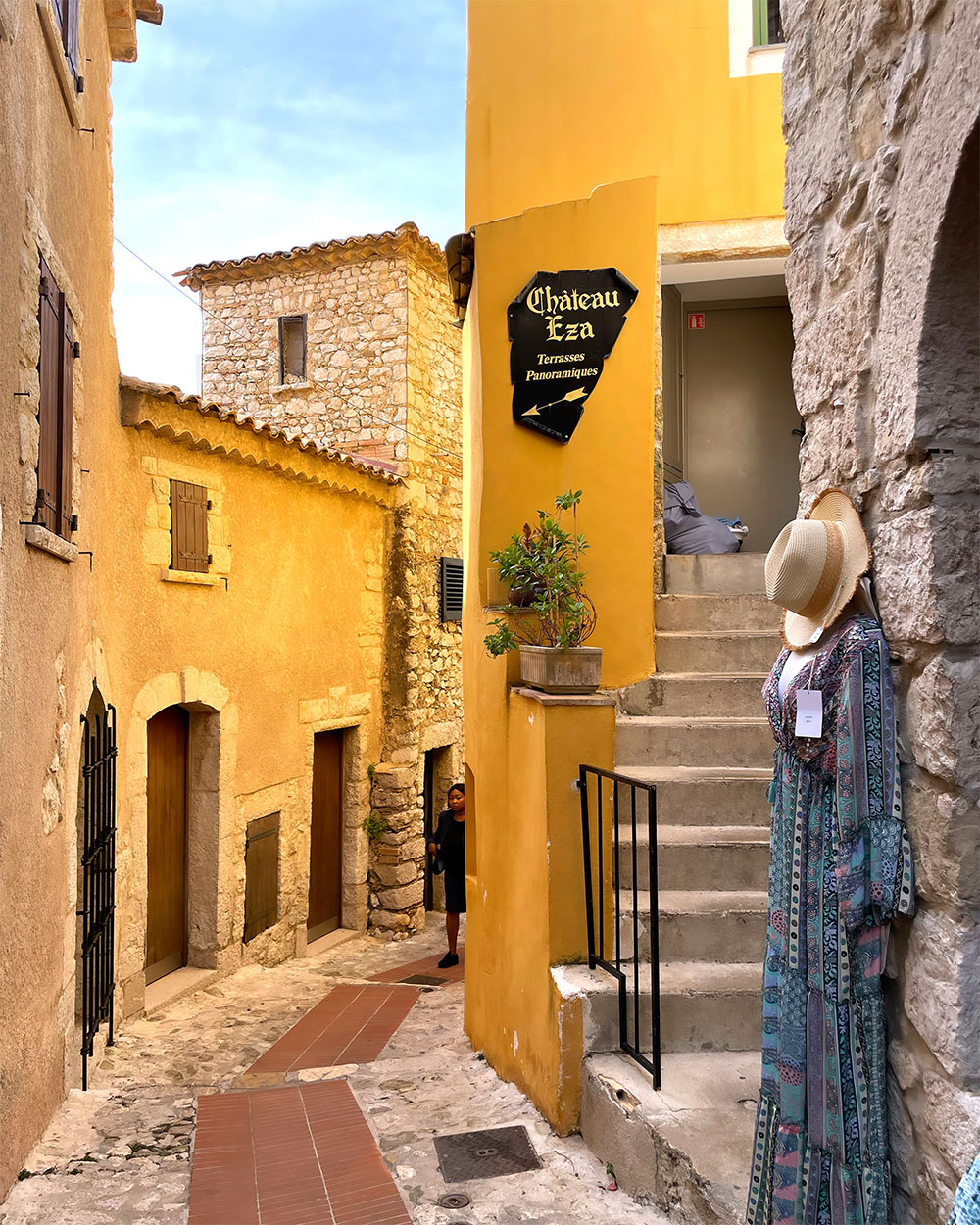
At its heart stands the 16th-century Citadel, a remarkable fortress that now
houses the Volti and Goetz-Boumeester Museums, each offering a glimpse into
the town’s rich artistic soul. Stroll through the Old Town, where narrow
cobbled streets lead you beneath vaulted passages like the mysterious Rue
Obscure, and onward to the sea. Along the way, pause at the Saint-Pierre
Chapel, its walls adorned with evocative frescoes by Jean Cocteau — an
intimate masterpiece blending spirituality and surrealism.
Life here unfolds slowly, to the rhythm of the waves. Spend the morning
exploring the harbour and the Port Royal de la Darse, once home to the royal
shipyards. Linger over a leisurely lunch on a seaside terrace, where every
plate celebrates the flavours of the Riviera olive oil, lemon, and
sea salt. And when the afternoon light softens, let yourself be drawn to the
bay, perhaps for a swim or a quiet sail under the pink-gold glow of sunset.
Once a modest fishing village, Saint-Jean-Cap-Ferrat blossomed into one of the
Riviera’s most exclusive retreats in the early 20th century, when aristocrats
and art patrons discovered its secluded beauty. Drawn by the peninsula’s
tranquillity and dazzling light, wealthy families built magnificent villas
overlooking the Mediterranean — none more iconic than the Villa Ephrussi de
Rothschild, a rose-hued palace surrounded by themed gardens that seem to float
between sky and sea.
Artists, too, found their muse here. Jean Cocteau, captivated by the
peninsula’s poetic calm, adorned Villa Santo Sospir with dreamlike murals
that still whisper of an era when creativity and elegance mingled effortlessly
along these sunlit shores.
Today, Saint-Jean-Cap-Ferrat remains an enchanting escape, where luxury never
overshadows nature. A 10-kilometre coastal path encircles the cape, offering
breathtaking views of the sea, cliffs, and villas framed by pine and
bougainvillea.

Èze Village is one of the most captivating hilltop gems of the French Riviera,
a medieval marvel that seems to float above the sea. Its narrow cobbled lanes,
golden stone façades, and cascades of bougainvillea transport visitors to
another era, one where time slows and every turn of a corner reveals a new
wonder.
Built in the Middle Ages, Èze clings to the mountainside between
Saint-Jean-Cap-Ferrat and Monaco, its streets twisting upward toward the
Baroque church of Notre-Dame de l’Assomption, which crowns the village with
serene grace. From here, the panorama is breathtaking the endless
blue of the Mediterranean stretching far below, the sky melting into the sea.
Èze’s quiet magic has long drawn dreamers, artists, and philosophers.
Friedrich Nietzsche once lived here, walking daily along the steep path that
now bears his name — the Nietzsche Trail — seeking inspiration (and perhaps
solace) in its dizzying views. Alfred Hitchcock chose the village as a setting
for his 1955 classic To Catch a Thief, and even Swedish royalty once called
the Château d’Èze home.
Despite its fame, Èze remains small and intimate — a village of only around 60
residents in winter, swelling to a few thousand in the summer months. Cars are
not allowed within its stone walls, preserving an almost sacred silence. Only
the sound of footsteps, the sea breeze, and the distant cry of gulls accompany
your walk.
Wander through the labyrinth of lanes lined with art galleries, ateliers, and
small boutiques, where local crafts and fine fragrances await discovery. Every
doorway seems to open into another story — a painter’s studio, a sculptor’s
hideaway, or a glimpse of everyday life behind shuttered windows.
Above it all, the Jardin Exotique d’Èze crowns the village like a natural
crown. This extraordinary garden of succulents and exotic plants offers a 360°
panorama that defies description — the kind of view that silences you, where
the blue of the sky and sea seem to merge into infinity. Among the terraces,
sculptures and ruins of the medieval castle add an air of timeless poetry.
Where Italy meets France, Menton stands as the Riviera’s most graceful border
town — a sunlit blend of art, history, and Mediterranean charm. With its
pastel façades, lush gardens, and sea views that melt into the horizon, Menton
is both elegant and effortlessly alive.
Awarded the Ville d’Art et d’Histoire label, the town holds centuries of
stories in its narrow streets. Wander uphill to the Baroque Saint-Michel
Basilica, where the climb rewards you with sweeping views over Les Sablettes
Beach and the old port. Every corner of the old town reveals a new shade of
colour, a whisper of Italy, and a trace of the Riviera’s timeless
romance.
But Menton’s true emblem is its golden fruit — the famous Menton Lemon.
Cultivated here since the 17th century, this citrus treasure is celebrated
each February during the vibrant Fête du Citron®, when parades,
sculptures, and festivals fill the streets with fragrance and joy.
And when summer fades, Menton continues to glow. Its mild climate and gentle
light make autumn a secret season quieter, softer, and perhaps even
more beautiful. Here, art, gardens, and gastronomy intertwine, offering an
experience that feels both intimate and eternal.
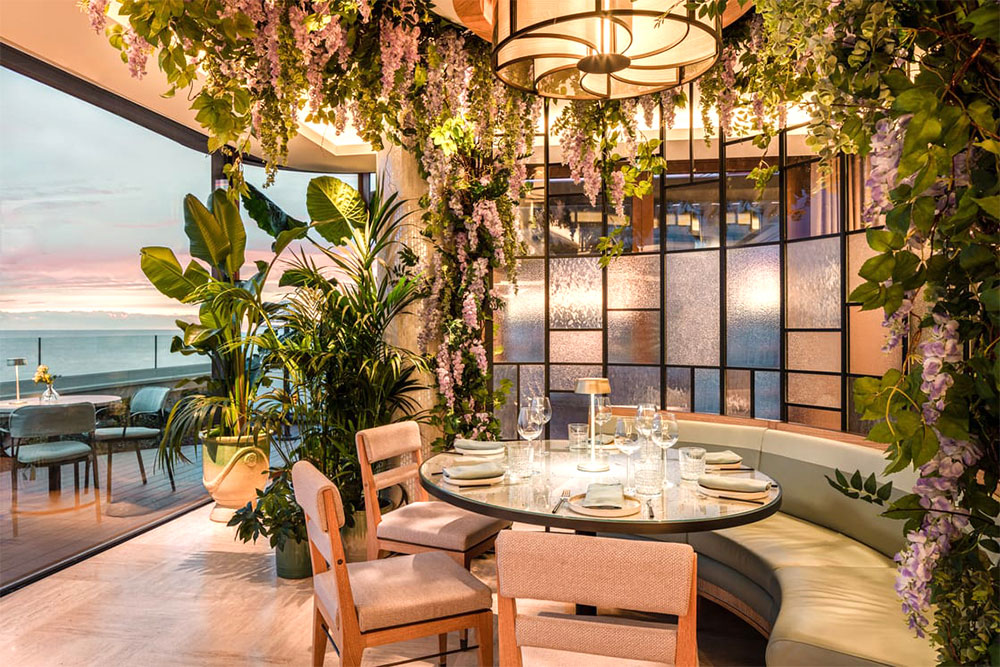
To truly experience Nice, one must begin at the table. Here, every meal is a
celebration of freshness, crisp salads, perfectly grilled fish,
seasonal vegetables, and a glass of local wine under the Mediterranean sun.
Nice’s cuisine is all about authenticity and balance. It draws its essence
from the land and sea, with olive oil — harvested on the surrounding hills and
proudly bearing the Protected Designation of Origin (AOP) at the
heart of every recipe.
Carrying the label “Cuisine Nissarde, le respect de la tradition,” this
culinary art form has become part of France’s intangible cultural heritage and
is now on its way to UNESCO recognition. From hidden bistros in the old town
to elegant terraces overlooking the Baie des Anges, each table tells a
story one of sunlight, simplicity, and the timeless taste of the
Riviera.

On the rooftop of DoubleTree by Hilton Nice Centre Iconic. You can pick your
fish, they prepare it for you, and it’s served fresh at your table inside or
on the terrace and enjoy the view with wide selection of wines.
2-Le Bistrot des Serruriers, Nice
Hidden in the heart of Old Town, this cozy spot is full of local
charm stone walls, vintage decor, and a warm, relaxed
vibe. The menu changes with the seasons, but don’t miss les farcies
Niçoises for a true taste of Nice.
3- Acchiardo Restaurant, Nice
Since 1927, this family-run gem in Old Town has been serving authentic Niçoise
flavors through 4 generations. Try local favorites like daube, panisses, and
stuffed vegetables , a true taste of Nice!
4-Anantara Plaza Hotel Rooftop Terrace, Nice
Start your day on the rooftop terrace with a delicious buffet breakfast and
breathtaking views of Baie des Anges. Enjoy fresh pastries, eggs made to
order, and signature sweet treats while soaking in the sparkling
sea.
Every Sunday from 12:30 PM to 3:30 PM you can experience a lavish brunch at
SEEN by Olivier Nice. Savour a curated selection of Mediterranean delights,
Asian flavors, and Japanese specialties from fresh fish, sushi, and seafood to
an indulgent cheese and dessert buffet. All this, accompanied by live music
and breathtaking views of the Mediterranean Sea.
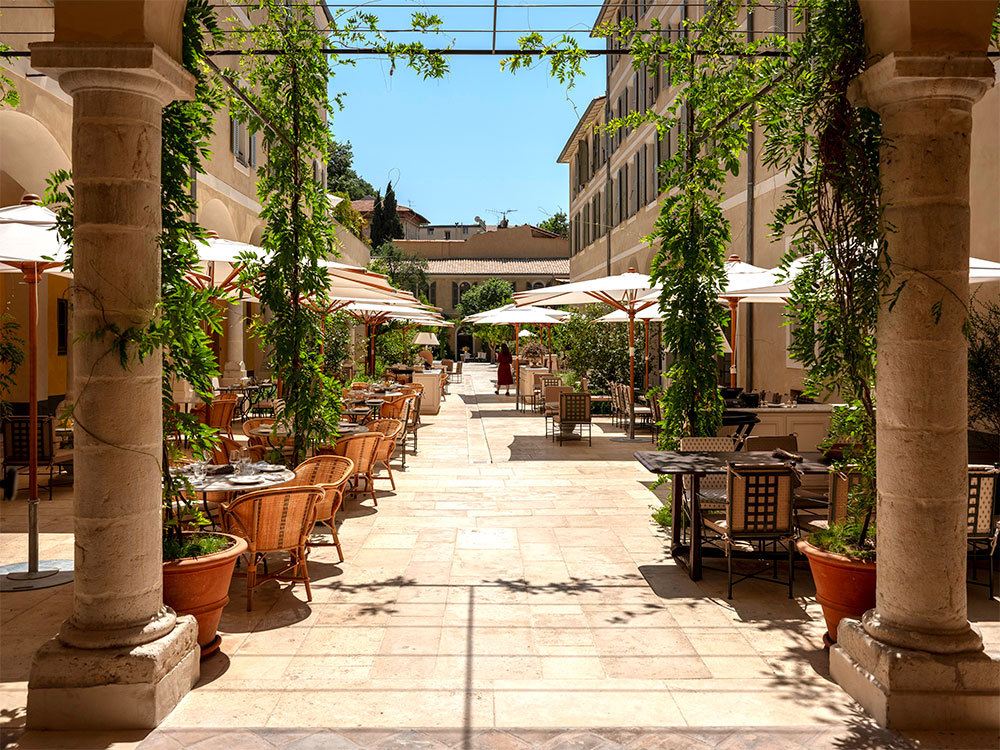
Where to Stay:
Anantara
Plaza Nice:
A Revival of Riviera Elegance
In December 2018, the iconic Hôtel Plaza Nice closed its doors for a major
renovation. Four years later, under the ownership of Covivio Hotel — Europe’s
leading hotel real estate investment company — the landmark property
re-emerges as Anantara Plaza Nice, operated by Minor Hotels.
More than a mere name change, the transformation elevates the hotel to one of
the Riviera’s most prestigious five-star destinations, perfectly honoring its
original 19th-century design, intended to welcome Europe’s aristocracy. The
extensive renewal project revives the golden era of hospitality while
introducing a new standard of modern services and experiential luxury.
Accommodation: A Distinct Vision of Luxury
Overlooking the Albert I Gardens, the Mediterranean Sea, and Old Town,
Anantara Plaza Nice offers 151 rooms and suites that merge comfort with
elegance, reflecting the French Riviera’s unique charm. Guests can enjoy king
or twin beds with goose-down duvets, a pillow menu for personalized comfort,
and palatial bathrooms.
Pastel tones, marble, wood, and Mediterranean textures create a serene
and sophisticated ambience, accentuated with gilt edges and crystal details.
Throughout the hotel, photographs celebrate the Côte d’Azur’s golden age,
while private balconies and terraces invite guests to bask in breathtaking
views.
Whether arriving for leisure or business, Anantara Plaza Nice sets a new
benchmark for Riviera luxury, combining heritage, elegance, and contemporary
refinement in one unforgettable experience.
Hotel du Couvent: Serenity in the Heart of Old Town
Nestled in the heart of Nice’s Old Town, Hôtel du Couvent offers a refreshing
departure from the glitz and excess often associated with the French Riviera.
This historic property, once a convent, has been lovingly restored by hotelier
Valéry Grégo, preserving its timeless charm while introducing modern comforts.
The hotel’s gardens—one traditional, one tropical—are a sanctuary in
themselves, inviting guests to linger and soak in the serene atmosphere. Yet,
for those eager to explore, the vibrant streets and hidden gems of la vieille
ville de Nice are just steps away.
Herbal Shop
The resident herbalist offers personalized advice, bespoke remedies, and teas
crafted from local herbs grown in the hotel’s garden, blending wellness with
tradition.
Roman Bath
Inspired by ancient Roman practices, the bath circuit at Hôtel du Couvent is a
journey of progressive relaxation. Begin in the warm tepidarium, move into the
hot caldarium, and conclude with a refreshing plunge in the cool
frigidarium—an experience designed to invigorate both body and min
Hotel Yelo Marengo
Yelo Marengo features a seamless blend of comfort, style, and history. This
stunning hotel was designed in 1907 by renowned architect Jean-Baptiste
Pachiaudi. Its intricate wrought-iron railings, expansive windows, and elegant
sandstone showcase the beauty of Art Deco architecture. Relax in your
sun-filled room, equipped with Chromecast streaming for entertainment, or
catch a quick workout in the fitness center. Breakfast is also available for
purchase every morning. Step outside and discover the vibrant transformation
of Gare de Sud — a converted train station now home to a cinema and food hall.
Walk to bustling Avenue Jean Médecin for endless shopping, or take advantage
of the tram stop right outside for easy access to every attraction. Let Yelo
Marengo be your perfect base to explore the best of Nice.